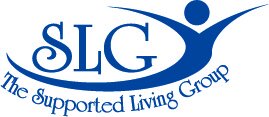Navigating the Medicaid Home- and Community-Based Services Waiting Lists in Connecticut: A Journey from 2016 to 2023
Access to Medicaid Home- and Community-Based Services (HCBS) has been a critical lifeline for millions of Americans, providing essential support to individuals with disabilities and seniors who wish to live independently in their communities. However, for many, the path to accessing these vital services has been fraught with challenges, often manifesting in long waiting lists. In this blog post, we delve into the landscape of HCBS waiting lists from 2016 to 2023, exploring the factors contributing to these lists, the evolving policies, and the implications for individuals and families in need such as those waiting for a spot on the Connecticut ABI Waiver Program.
Understanding HCBS Waiting Lists:
HCBS encompasses a range of services designed to support individuals with disabilities and older adults in their homes and communities, including brain injury support, personal care, home health services, elder care, and more. These services are funded through Medicaid, but states such as Connecticut have discretion in determining eligibility criteria and service availability, leading to significant variation across the country.
From 2016 onwards, many states reported substantial waiting lists for HCBS, with individuals often waiting months or even years to access services. Factors contributing to these waiting lists include limited funding, complex eligibility criteria, and an increasing demand for services driven by demographic shifts, including an aging population and an ongoing rise in the number of individuals with disabilities.
Policy Changes and Initiatives:
Recognizing the pressing need to address HCBS waiting lists, policymakers at both the federal and state levels have implemented various initiatives aimed at reducing barriers to access and expanding service availability. These efforts have included:
Increased Funding: In response to growing demand, federal and state governments have allocated additional funding to support HCBS programs. Initiatives such as the Money Follows the Person (MFP) demonstration program have provided grants to states to transition individuals from institutional care to community-based settings, in an attempt to alleviate pressure on waiting lists such as those experienced by Connecticut’s brain injury community.
Waiver Flexibility: States have sought greater flexibility in Medicaid waiver programs to streamline eligibility criteria and expedite access to services. Waiver programs allow states to offer HCBS to individuals who would otherwise require care in a nursing home or other institutional settings.
Person-Centered Planning: A shift towards person-centered planning has emphasized individual choice and control in HCBS delivery. This approach aims to empower recipients to tailor services to their unique needs and preferences, potentially reducing waiting times by optimizing resource allocation.
Technology and Innovation: Advancements in technology have enabled the delivery of certain HCBS remotely, expanding access to services and reducing reliance on in-person care providers. Telehealth, remote monitoring, and assistive technologies have emerged as promising solutions to address capacity constraints and waiting lists for some service populations.
Implications and Future Outlook:
While some progress has been made in addressing HCBS waiting lists, significant challenges persist in States such as Connecticut. Funding constraints, workforce shortages, and bureaucratic hurdles continue to hinder access to vital services for many individuals and families being held hostage by waitlists. Moreover, the COVID-19 pandemic exacerbated existing disparities and highlighted the urgent need for robust, equitable HCBS systems.
Looking ahead, policymakers, advocates, and stakeholders must continue to prioritize efforts to enhance HCBS access and affordability. This includes sustained investment in Medicaid HCBS programs, workforce development initiatives to recruit and retain caregivers, ongoing evaluation of policies to ensure they align with the evolving needs of the population, and linking service rates to nationwide economic changes to maintain program feasibility.
The journey from 2016 to 2023 has seen both progress and persistent unanswered challenges in the realm of Medicaid Home- and Community-Based Services. While waiting lists and stagnant service reimbursement rates remain a significant barrier for many, concerted efforts at the federal and state levels have yielded promising policy changes and initiatives aimed at expanding access and improving the quality of care. Moving forward, continued collaboration and innovation will be essential to building a more inclusive and equitable HCBS system that meets the diverse needs of individuals and promotes independence, dignity, and community integration through the deployment of viable community-based support services.

